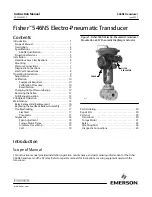
______________________________________________
HARRIS
888-9058-001
WARNING: Disconnect and lockout AC primary power prior to servicing
36
n.
An overhead grid of Unistrut™ or angle iron and 3/8 inch threaded rod is most
commonly used. Pipe hangers for steam pipe may be used to hold the coax, combiners,
etc. Pay special attention to the different types of materials being used. For example, if
galvanized parts are used to support copper RF plumbing, the two must be separated
using adhesive-backed rubber strips or tape to prevent galvanic corrosion.
o.
The basic transmitter generally includes filters and directional couplers for metering
and AGC samples. One or more hybrid combiners are present in multiple cabinet
systems. Line is included for a typical installation up to the filter output. Any
other RF line components are purchased separately. Be sure to obtain all components
necessary for your installation.
2.2.3 Air System
2.2.3.1 Outside Air Cooling
The Transmitter Outline drawing shows a typical exhaust duct and blower system, and
the total transmitter requirement for cooling air. Do not include control cabinet in an
overhead hood system, hood turbulent air flow can compromise control cabinet air
flow.
The minimum ceiling height to properly handle exhaust air as shown is 12 feet.
The outline drawing also shows a typical air intake and pre-filter system. Minimum air
flow requirements are 3,500 CFM per PA cabinet.
The intake blower should be sized to provide slight positive room pressure. A
manometer installed to sense pressure drop across the filters can be used to indicate
when pre-filter replacement is due.
If the existing space on site will not permit construction of the recommended air
system,
then care must be taken to modify the design to fit the available space and still properly
cool the transmitter.
Keep in mind that the recommended system is sized only for cooling the transmitter.
Any additional cooling load in the building must be considered when selecting the air
system components.
The transmitter exhaust should not be the only exhaust in the room, as heat from the
peripheral equipment would then be drawn through the transmitter. Additional flushing
air is recommended for the removal of heat from any equipment surrounding the
transmitter. A good guideline is to keep input air no greater than 5 C degrees above
ambient. The maximum transmitter operating temperature is 50 degrees C at sea level
(de-rate 2 C degrees for each 1000 feet above sea level). A high altitude fan blade is
available if this rating is exceeded. Contact Harris field service for information and
application assistance when high altitude operation is required.
















































